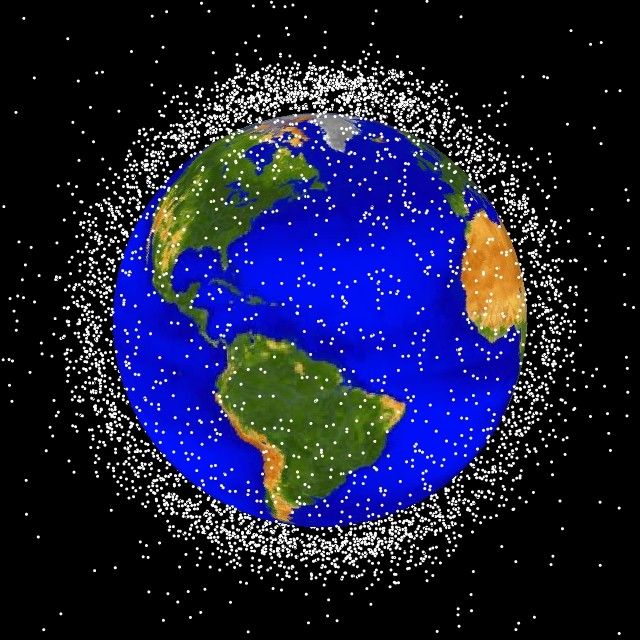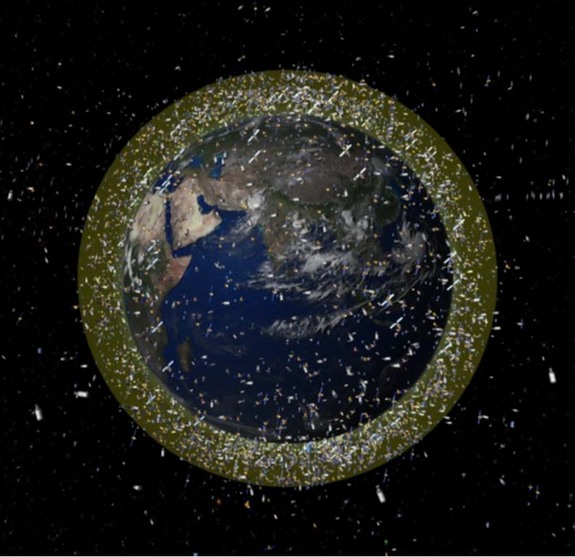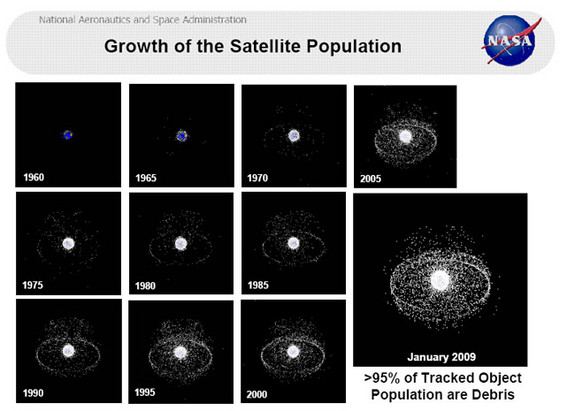Space junk cleanup poses grand challenge for 21st century

Scientist warn about threat to spacecraft and the enviroment that posses space debris orbiting the Earth. According to J.-C. Liou of the Orbital Debris Program Office at NASA’s Johnson Space Center, the space junk trend no longer can be reversed by full compliance with mitigation measures now in place. It will get worse without more-aggressive action such as active debris removal, or ADR. And that just might pose the biggest engineering challenge of the 21st century.
NASA’s Orbital Debris Quarterly News
Worst Space Debris Events of All Time
Even if nations are in 100 percent compliance of all the measures now in effect to help curb space junk — guidelines more than a decade in the making — “it would not be enough. … We have reached that point. More aggressive measures need to be taken. In the meantime, smashups between objects in space lead to fragmentation, constantly creating more debris.
Ugly Truth of Space Junk: Orbital Debris Problem to Triple by 2030 (Space.com)

A long-term strategic plan for removing orbital clutter requires the four C’s, — four critical steps needed at the international level:
- Consensus on active debris removal.
- Cooperation: the removal targets may belong to a different country.
- Collaboration: It is highly unlikely that any single organization or country can accomplish the goal by itself.
- Contributions: Cost-sharing will be the key for engaging in active debris removal.
Video: The Expanding Danger of Space Debris
To control the future increase in space debris or reduce the number of fragmentations, officials should focus removal operations on large rocket bodies or spacecraft — objects at least several meters long, Liou explained. And to reduce mission-ending threats to operational spacecraft, the focus should be on the 5-millimeter to 1-centimeter debris.
Over the years, a number of space debris removal ideas have been proposed, from space tethers, giant foam balls and laser beams to garbage scows and even huge fishing nets.
Orbital debris-removal appraisals currently underscore two criteria: “It’s not just based on size or mass, it’s based on the collision probability and mass.“
That being the case, if the goal is to stabilize the debris population environment in low-Earth orbit at today’s levels, about five large, intact objects need to be removed per year. Many — but not all — of the potential targets in the current environment are spent Russian upper stages.

As for next steps, Liou flagged the recent National Space Policy, a White House document released in June 2010.
That policy, for one, calls upon NASA and the U.S. Department of Defense to pursue research and development of technologies and techniques to mitigate and remove debris in orbit now, reduce hazards and increase understanding of the current and future debris environment.
Liu suggests an implementation plan or a road map. This long-term plan would engage international partners regarding orbital debris removal. (Space.com)
U.S. Government Orbital Debris Mitigation Standard Practices

Commenting rules and guidelines
We value the thoughts and opinions of our readers and welcome healthy discussions on our website. In order to maintain a respectful and positive community, we ask that all commenters follow these rules:
We reserve the right to remove any comments that violate these rules. By commenting on our website, you agree to abide by these guidelines. Thank you for helping to create a positive and welcoming environment for all.